Introduction: Why Deliverability Defines Cold Email Success
You can write the perfect cold email — personalized, concise, value-driven — but if it doesn’t land in your prospect’s inbox, it’s wasted effort.
That’s where email deliverability tools come in.
They don’t just send emails; they protect your domain reputation, warm up your inbox, and monitor your sender health to ensure your campaigns perform consistently.
If you’ve already read our main guide, Cold Email Strategy: Your Action Plan to Connect with Sales Prospects, you know deliverability is one of the three pillars of successful outreach.
This post dives deeper — here are the best tools that make it happen in 2026.
What Makes a Great Email Deliverability Tool?
Before we jump into the list, let’s define what to look for. A solid deliverability tool should:
- Warm up your inbox safely before large campaigns.
- Authenticate your domain via SPF, DKIM, and DMARC checks.
- Track spam placement and blacklist alerts in real time.
- Test email content for spam-triggering words or broken links.
- Monitor reputation and bounce rates across campaigns.
- Integrate easily with cold outreach tools or CRMs.
Top 10 Email Deliverability Tools to Use in 2026
Below is a curated list — covering features, ideal use cases, and pricing insights — all updated for 2026.
1. Warmy.io
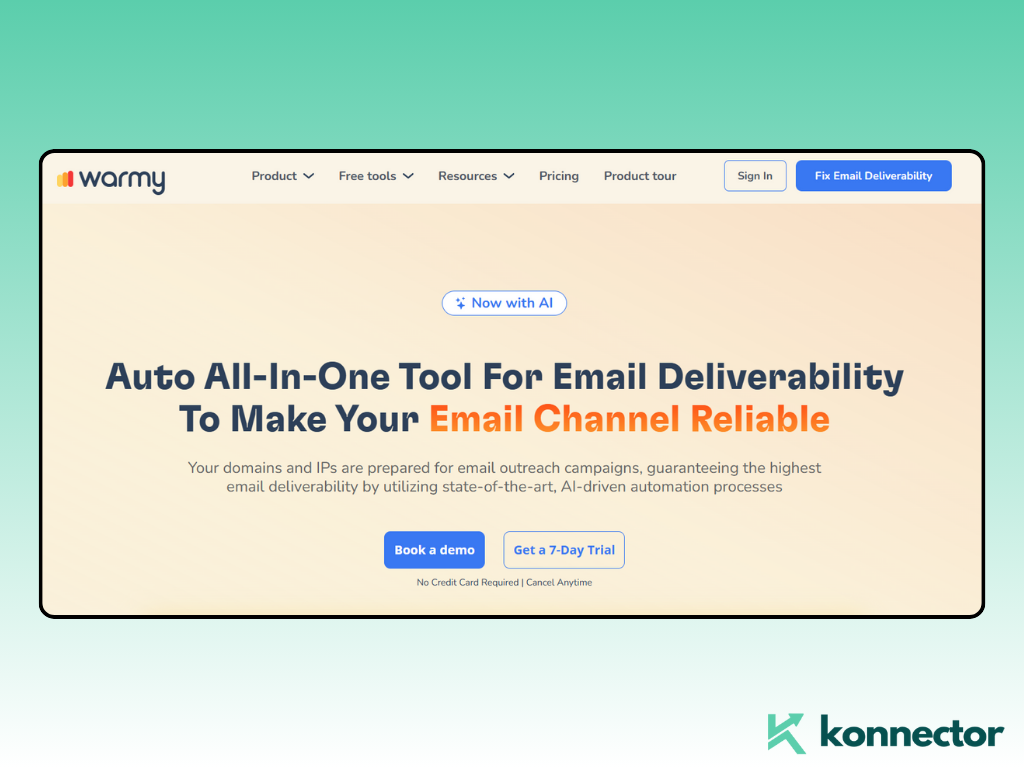
Best for: Automated inbox warm-up and domain reputation building
Warmy.io uses AI to simulate natural email exchanges, gradually increasing your send volume. It automatically replies to your test emails, removes them from spam, and improves trust with ESPs like Gmail and Outlook.
Key Features:
- AI-driven warm-up with human-like reply patterns
- Reputation scoring and real-time reports
- Supports multiple inboxes per domain
- Integrations with Woodpecker, Instantly, and HubSpot
Why it stands out:
It adjusts send volumes dynamically — preventing over-warming and reducing spam risks.
2. MailFlow (formerly Folderly)

Best for: Advanced deliverability tracking for sales teams
MailFlow analyzes your campaign content, sending history, and domain setup, flagging exact reasons your emails hit spam.
Key Features:
- Spam folder testing across 50+ ISPs
- Inbox placement analytics with visual heatmaps
- Automatic domain health alerts
- Actionable recommendations for content fixes
Pro tip: Pair it with the deliverability checklist from Why Are My Emails Going to Spam? for a complete inbox strategy.
3. Mailreach
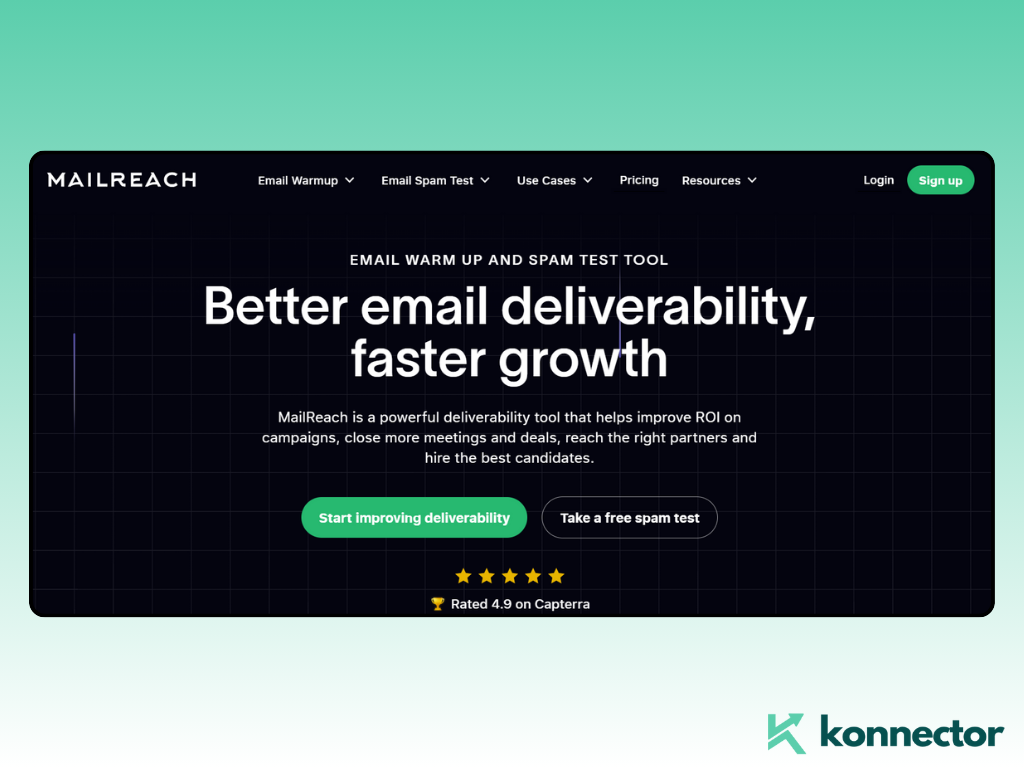
Best for: Agencies managing multiple client domains
Mailreach warms up your domains across hundreds of verified accounts, mimicking natural conversations.
Key Features:
- Multi-domain warm-up management
- Deliverability testing with global ISP coverage
- Inbox monitoring and blacklisting alerts
- Custom warm-up scheduling
Why we like it:
It provides a “reputation recovery mode” that’s ideal if your domain has been flagged recently.
4. GlockApps
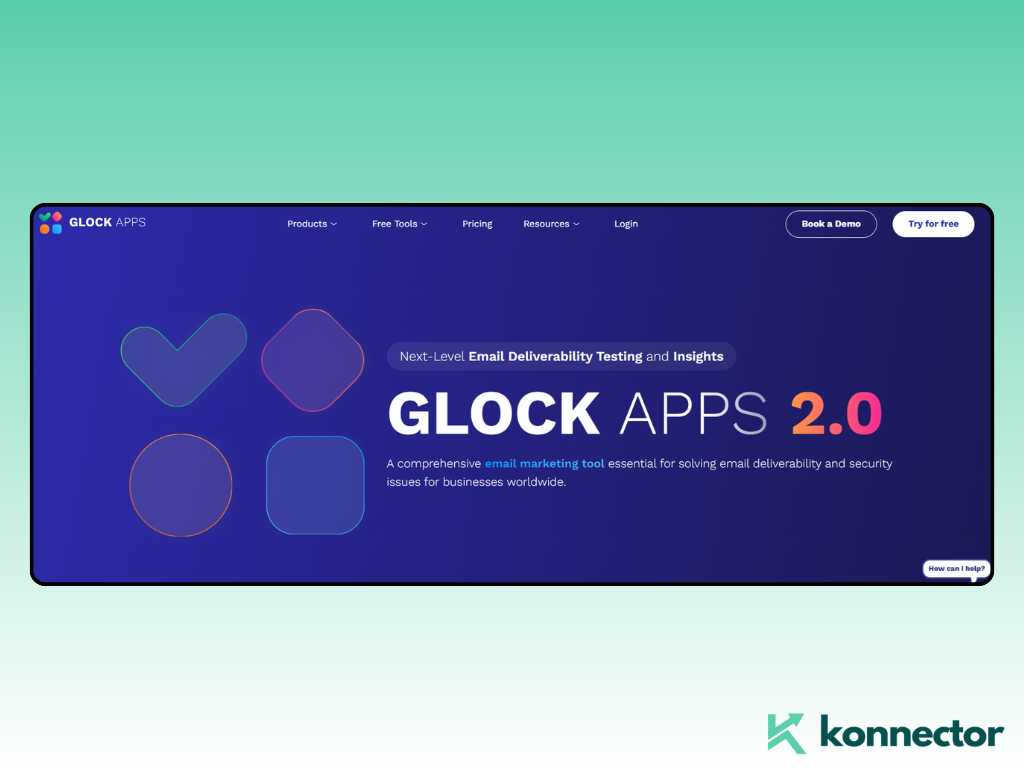
Best for: Testing email content and spam placement
GlockApps offers deep visibility into how your email performs before you send it — across Gmail, Outlook, Yahoo, and more.
Key Features:
- Spam score testing and inbox placement checks
- Authentication setup analyzer (SPF, DKIM, DMARC)
- Bounce and complaint monitoring
- Integration with sending tools like SendGrid and Mailgun
Pro tip:
Run every new cold email campaign through GlockApps before launching — it helps catch spam triggers early.
5. NeverBounce
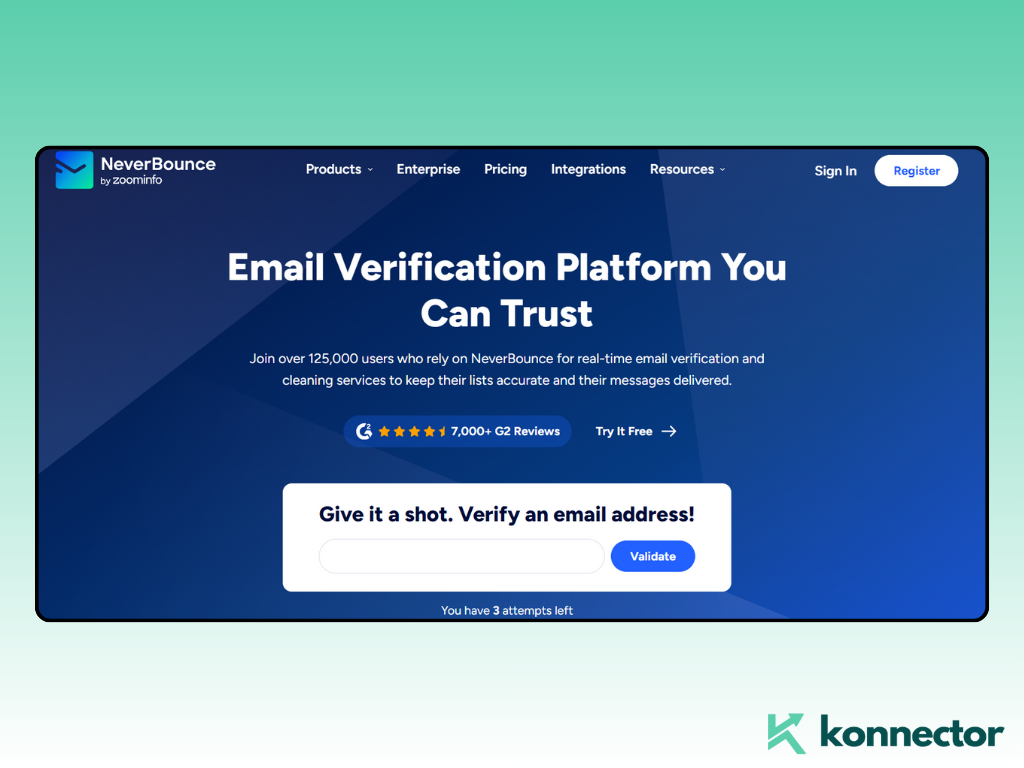
Best for: Email verification and bounce prevention
NeverBounce is the gold standard for list hygiene. It validates your contact lists, ensuring every address you send to is active and safe.
Key Features:
- Bulk email verification and API integration
- Real-time validation for form submissions
- Accuracy rate above 99%
- Integrations with HubSpot, Mailchimp, and Konnector.AI
Why it matters:
A high bounce rate instantly harms your domain score — NeverBounce protects you from that risk.
6. Postmark

Best for: Transactional email deliverability
If you’re sending transactional or product emails (like password resets or confirmations), Postmark ensures near-instant inbox delivery.
Key Features:
- Industry-leading 10ms send time
- Detailed delivery and open tracking
- Separate IPs for transactional vs marketing emails
- Robust APIs for developers
Pro tip:
Even if you only run cold outreach, studying Postmark’s delivery infrastructure offers insight into how top-tier systems maintain trust.
7. InboxAlly

Best for: Repairing damaged sender reputation
InboxAlly helps “train” mailbox providers to trust your domain by having real users engage with your emails — opening, replying, and marking them as important.
Key Features:
- Real human-like engagement across ISPs
- Sender reputation rebuilding
- Engagement tracking dashboards
- Supports multiple domains and ESPs
Why it stands out:
It’s a recovery tool — perfect if you’ve hit a deliverability dip or ended up on a minor blacklist.
8. MailTester

Best for: Pre-send spam and content testing
Quick, simple, and free to start — MailTester assigns a score (out of 10) to your email based on content quality, authentication, and potential spam words.
Key Features:
- SpamAssassin test scoring
- SPF/DKIM record verification
- HTML content and broken-link scanning
- Blacklist lookup
Pro tip:
Run your first cold email template here — a score of 9+ means you’re ready to send.
9. SendForensics

Best for: Email scoring and deliverability benchmarking
SendForensics provides an in-depth deliverability analysis, showing you how your campaigns perform compared to industry benchmarks.
Key Features:
- Deliverability scoring system
- Domain and IP monitoring
- Content analysis with spam trigger identification
- Detailed deliverability timeline reports
Why it’s great:
Ideal for teams scaling multiple outbound campaigns — you can track deliverability trends over time.
10. Warmbox.ai

Best for: AI-based deliverability improvement
Warmbox uses AI learning to engage automatically with your sent emails — marking them as important and removing them from spam.
Key Features:
- AI-powered inbox interactions
- Automatic domain rotation
- Reputation insights dashboard
- Multi-account warm-up support
Bonus tip:
Warmbox integrates well with Cold Email Strategy frameworks by optimizing your sending rhythm and sender trust simultaneously.
How to Combine These Tools for Maximum Results
To get the most from your cold email campaigns, stack your tools strategically:
- Start with list hygiene: Verify every email with NeverBounce.
- Authenticate and warm up: Use Warmy.io or Mailreach.
- Test before sending: Check with MailTester or GlockApps.
- Monitor and optimize: Use MailFlow or SendForensics to track inbox placement.

This workflow ensures you maintain domain reputation, low bounce rates, and consistent deliverability over time.
Common Mistakes That Still Hurt Deliverability
Even with the best tools, many senders make these avoidable mistakes:
- Sending bulk emails from a brand-new domain
- Ignoring authentication setup (SPF, DKIM, DMARC)
- Skipping warm-up or scaling volume too fast
- Using generic copy-paste templates
- Neglecting to clean lists regularly

Avoid these, and you’ll keep your cold outreach pipeline strong — as detailed in Cold Email Strategy: Your Action Plan to Connect with Sales Prospects.
Conclusion: Deliverability Is the Backbone of Cold Outreach
No matter how creative your outreach message is, it only works if it reaches the right inbox.
That’s why investing in the right deliverability tools is a non-negotiable step in your cold email workflow.
Whether you’re cleaning your lists, warming up new domains, or monitoring spam placement — tools like Warmy.io, GlockApps, and MailFlow are your safety net in 2026.
If you’re still finding your emails slipping into spam, jump straight to our in-depth troubleshooting guide:
Why Are My Emails Going to Spam? Learn How to Avoid Spam Folders.
Together, these three guides give you a complete system to plan, send, and scale high-performing cold emails — reliably.
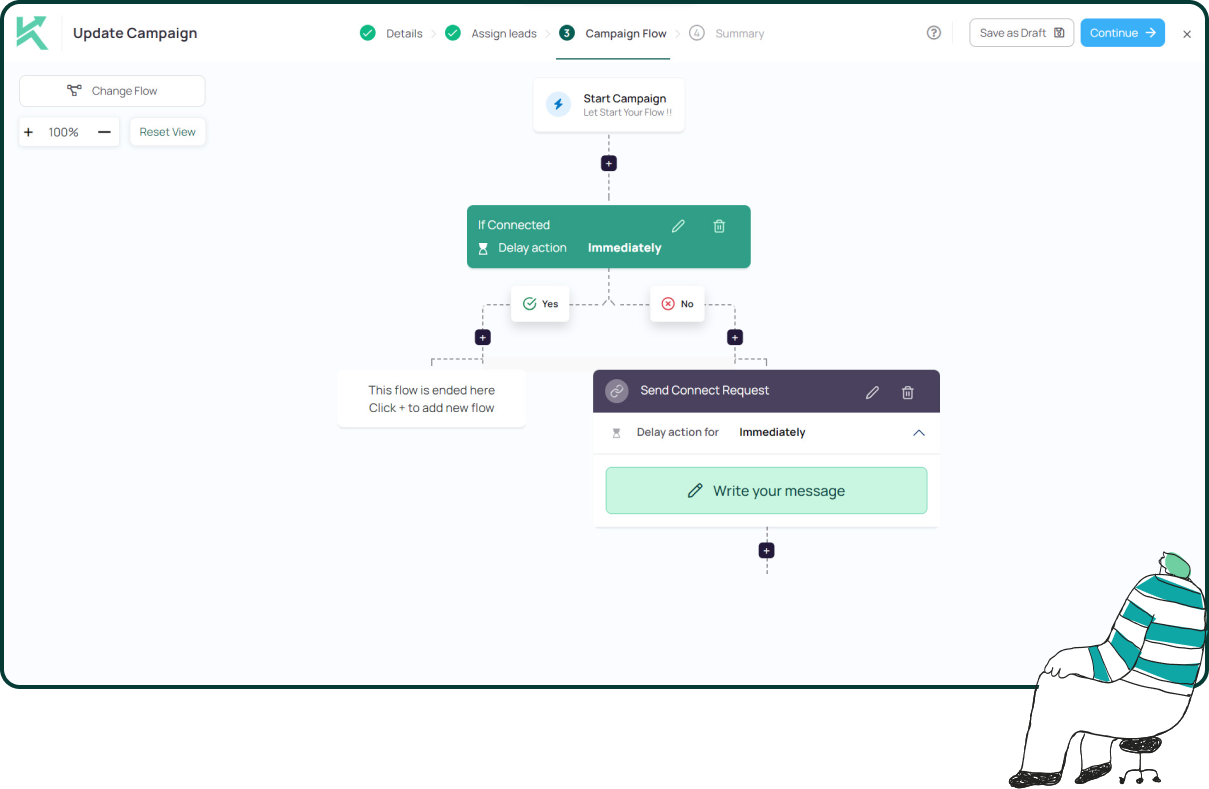
11x Your LinkedIn Outreach With
Automation and Gen AI
Harness the power of LinkedIn Automation and Gen AI to amplify your reach like never before. Engage thousands of leads weekly with AI-driven comments and targeted campaigns—all from one lead-gen powerhouse platform.
Frequently Asked Questions
Email deliverability tools help ensure your messages reach your recipient’s inbox instead of landing in spam. They monitor your sender reputation, authenticate domains, warm up new inboxes, and analyze spam triggers in your emails.
Deliverability directly impacts how many prospects actually see your emails. Even a well-written campaign fails if inbox providers filter your messages as spam. Tools that maintain good domain health and engagement rates boost visibility and conversions.
Top-rated tools in 2026 include Warmy.io for AI-based inbox warm-up, MailFlow for advanced reputation tracking, and GlockApps for spam testing. The best tool depends on your campaign size and sending frequency.
Warm-up tools gradually increase the number of emails sent from your domain while simulating natural interactions like replies and opens. This builds trust with email service providers and prevents sudden volume spikes that trigger spam filters.
They can identify and correct the technical and behavioral reasons your emails go to spam — such as missing authentication, poor engagement, or bad list hygiene.
You can test your score using tools like MailTester, Send Forensics, or GlockApps. They analyze your email content, headers, and authentication setup, then rate your deliverability on a 1–10 scale.
Check your sender reputation weekly during active campaigns. Most deliverability tools, such as MailFlow and Warmy.io, send automated alerts if your domain score drops or your IP gets flagged.
The biggest culprits include unverified domains, high bounce rates, inconsistent sending patterns, and spammy content. Always validate emails with tools like NeverBounce and authenticate your domain before launching new campaigns.
Yes. Tools like MailTester offer free basic spam analysis and authentication checks. However, paid tools provide deeper insights, warm-up features, and ongoing monitoring that free tools lack.





